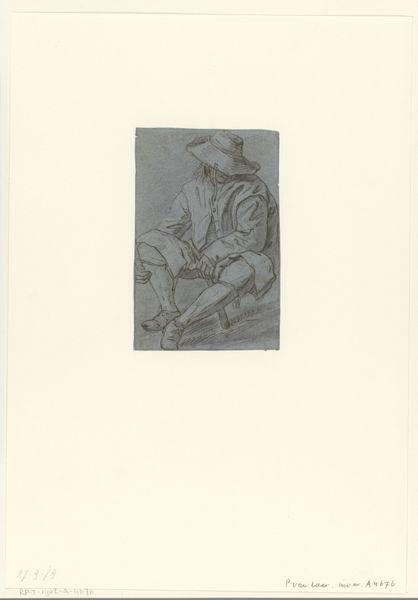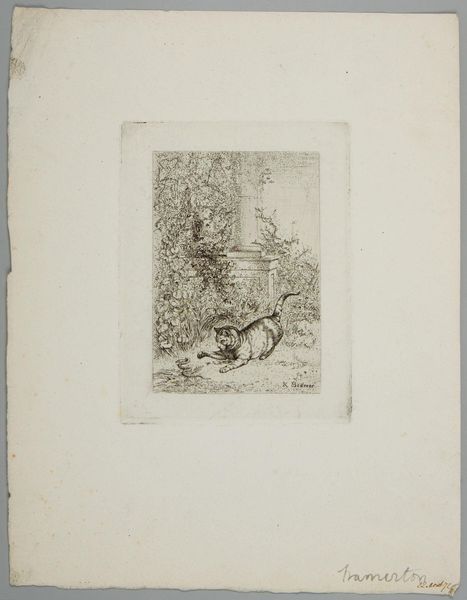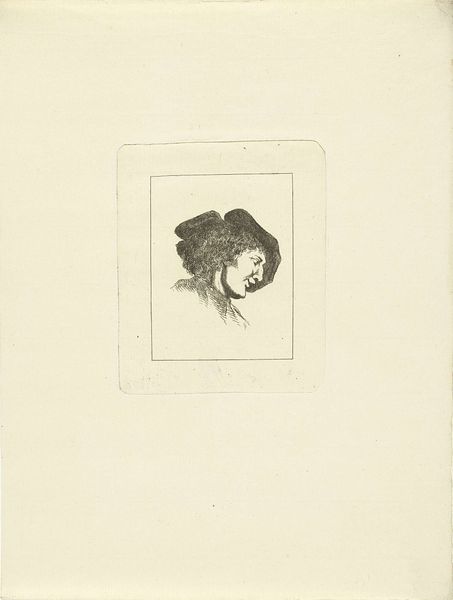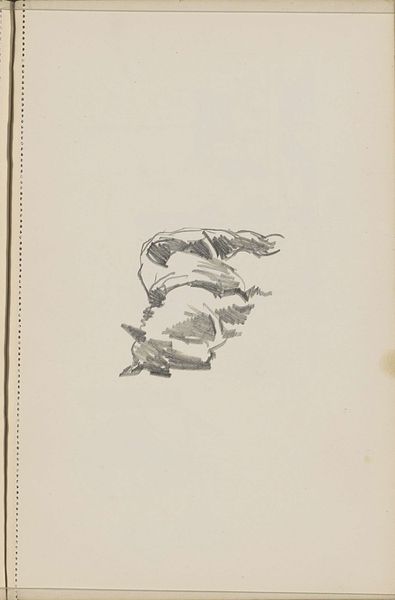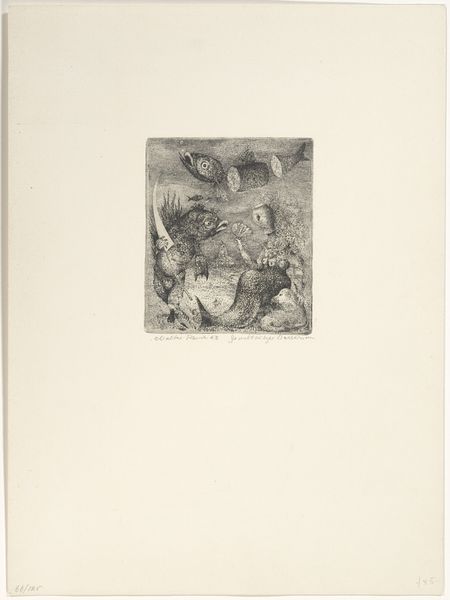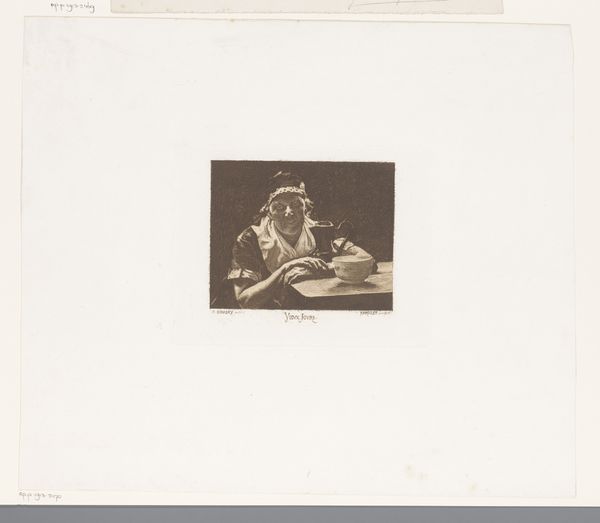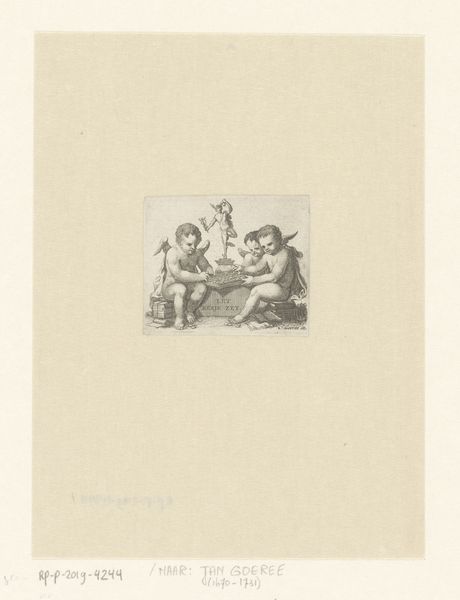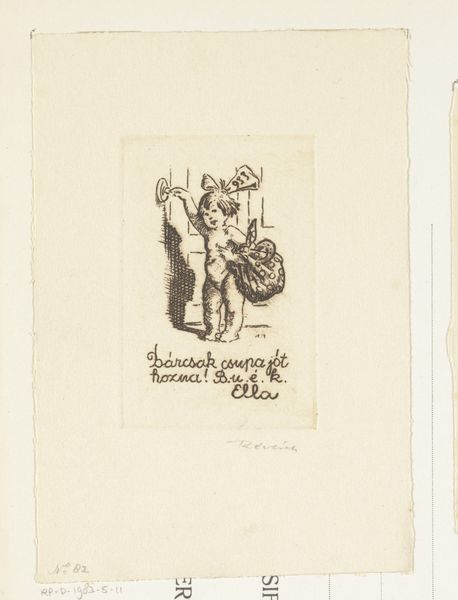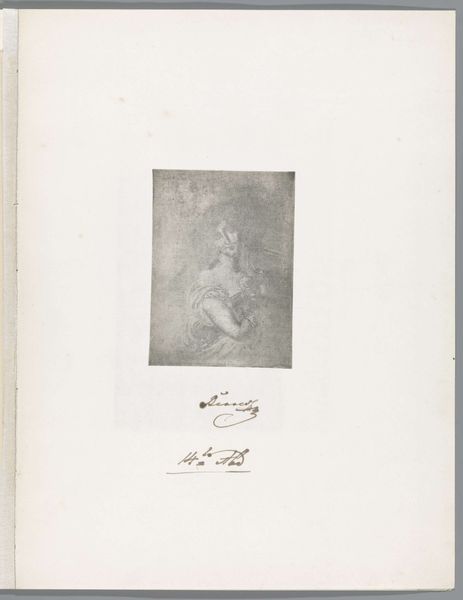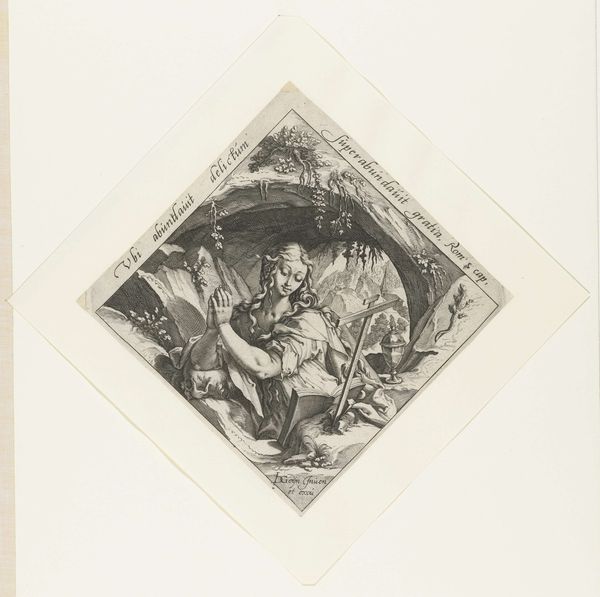
print, etching
#
animal
# print
#
pen sketch
#
etching
#
landscape
#
genre-painting
#
realism
Dimensions: height 115 mm, width 115 mm
Copyright: Rijks Museum: Open Domain
Editor: This etching, “Liggende en staande koe” – that's "Lying and Standing Cow" - is attributed to G. van Citters and dates from around 1750-1800. It feels very simple; two cows in a small square format. How do you interpret this work? Curator: It's deceptively simple. Cows, in art, carry centuries of symbolic weight. They’re not just farm animals; they represent sustenance, fertility, and a connection to the land. Think of the sacred cow in some cultures, or the bull, its masculine counterpart, associated with power and virility. Even in a seemingly straightforward genre scene like this, those underlying meanings are present. Editor: So you are saying there's more to this image than just two cows relaxing? Curator: Absolutely. The contrast between the standing and reclining cow might even represent different aspects of life – activity versus rest, perhaps. The etching technique itself – those delicate lines – evokes a certain pastoral ideal, a romanticized vision of rural life. Also, consider the social context: this print would have likely been circulated among a specific audience with pre-existing beliefs, making it possible to create meaning. Does the positioning remind you of anything? Editor: I hadn’t thought about it that deeply, to be honest! I suppose the positioning could reflect societal hierarchies... or maybe I'm reaching. Curator: Perhaps. But art often holds a mirror to society, reflecting its values and concerns. Exploring those potential layers of meaning is where the real richness lies. It's amazing how much a seemingly simple image of two cows can reveal. Editor: Thanks, that’s given me a lot to consider. It's shifted my perspective from just seeing farm animals to understanding a whole visual language and possible societal interpretations!
Comments
No comments
Be the first to comment and join the conversation on the ultimate creative platform.



